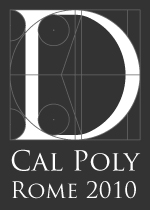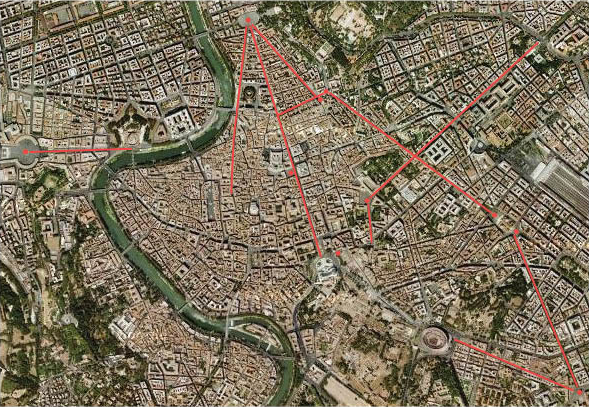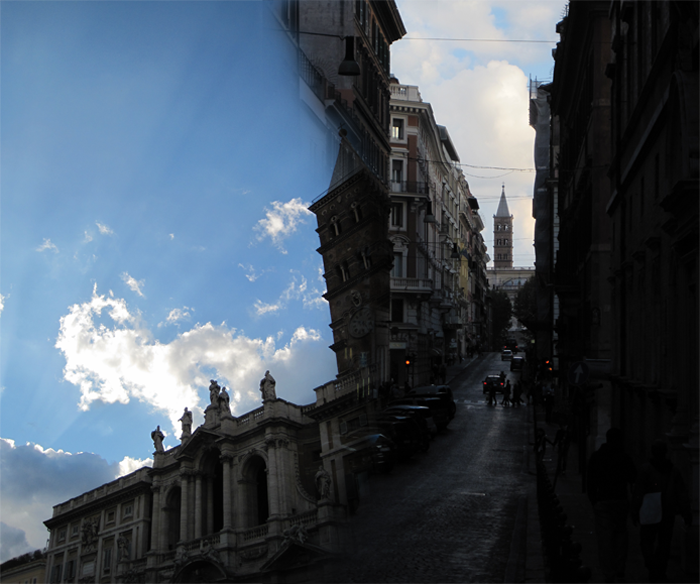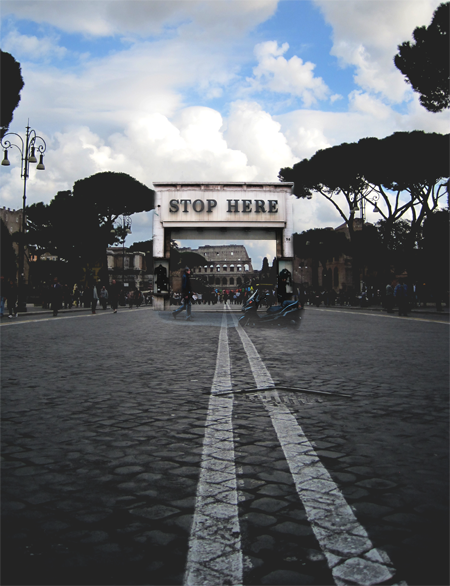In the mid 16th century, Pope Sixtus V decided to take on an ambitious linguistic challenge. Yet his challenge, a translation, did not involve spoken word or written word (although both we probably used to bring his translation into being). He translated an idea into a city – Rome. His vision was to turn Rome into a whole holy city, a city connected under the presence of god through axis and obelisks, a city for pilgrims from all corners of the known world. By forging physical and visual corridors through the existing building fabric, Sixtus V and Domenico Fontana, the Roman architect, carved connections from church to church and holy space to holy space. In addition to the newly formed roads, the two thinkers oversaw the erection of great obelisks marking each end of the connections and creating visual foci that beckoned to travelers.
Evidence of their success exists today. Try walking down Via del Corso or towards Santa Maria Maggiore. Its hard not to be drawn down these man-made valleys of shops, piazze, offices, and apartments. These corridors still today direct people, moving the masses around the city. Today, even more axis exist, carved after Italian unification and under the prideful rule of Mussolini. Though these paths still often lead to religious structures, the holy city has been translated further, turning holy spaces into tourist destinations. The axis have adapted and further translated the city from a city of pilgrims to a city of tourists. People come today hungry for pasta instead of god, souvenirs instead of relics, and guided tours instead of mass. Who knows what the streets may translate to next…
Leave a Reply
You must be logged in to post a comment.



